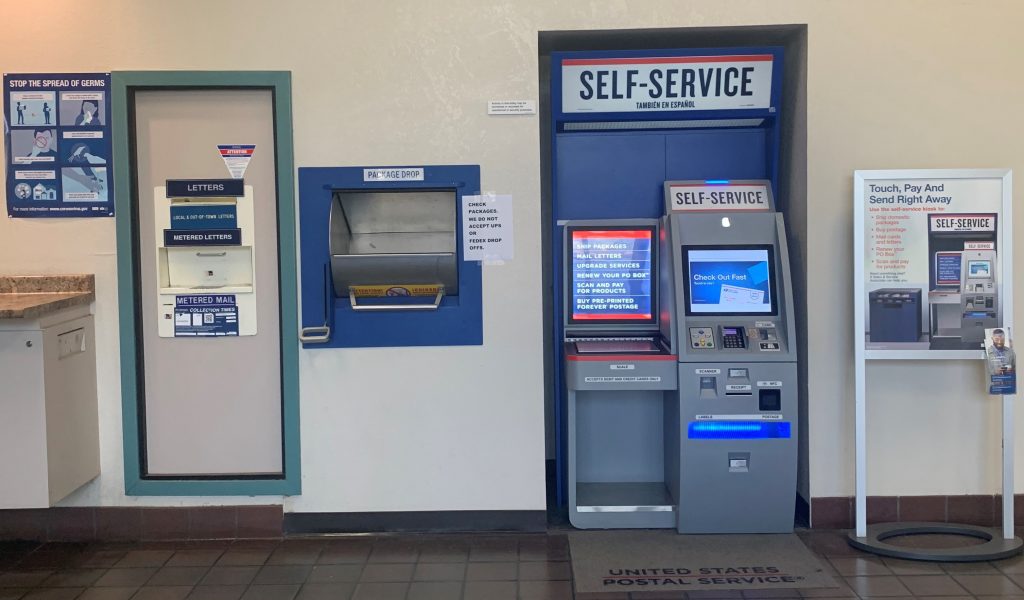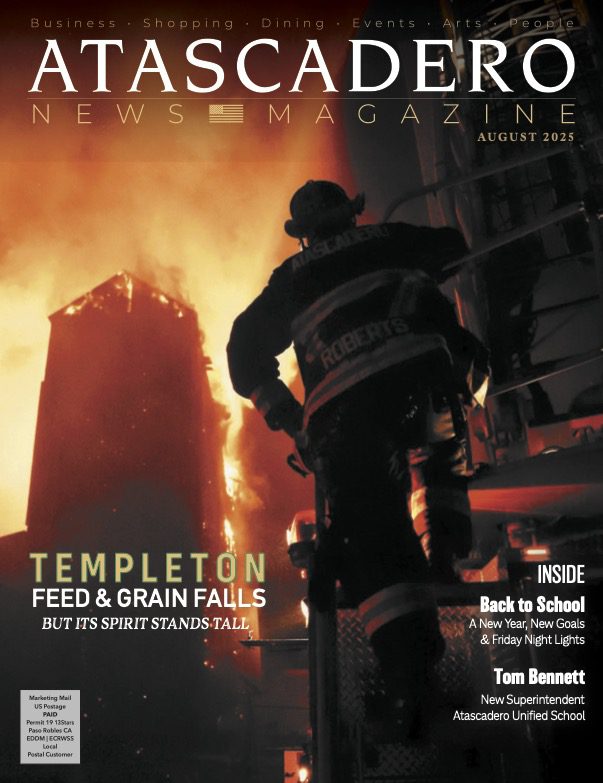The United States Postal Service (USPS) blue-steel mailboxes have received a lot of attention over the past week when it was reported nationwide that the blue mailboxes were disappearing.
According to the USPS, the blue-steel box mail collection is consistently audited every year. USPS evaluates the boxes that receive small amounts of correspondence for removal. This allows the branch to save on the cost of fuel and work hours linked to that mailbox that is not worth the time and effort of its mail carriers.
Over the years, USPS has routinely evaluated the installation and removal of these boxes based on volume. The boxes that do not receive a lot of mail can be relocated and installed in areas of increasing populations or removed altogether. Currently, there are nearly 142,000 blue-steel collection boxes nationwide.
Decisions to remove these boxes are also made on a case-by-case basis, so if that box is the only means for sending correspondence in a neighborhood, complex, or business center, it will most likely be kept. The USPS stated in a report last year that “over the last few years a greater emphasis has been placed on stabilizing the number of collection boxes in use and relocating low-use boxes to high traffic areas such as shopping centers, business parks, grocery stores, etc. for increased customer convenience.”

On July 27, the new Postmaster General, and CEO Louis DeJoy, (who replaced Postmaster General Megan J. Brennan, who announced her intent to retire effective in January 2020 but stayed on while the USPS Board of Governors searched for her replacement) issued a statement explaining that “the Postal Service is in a financially unsustainable position, stemming from substantial declines in mail volume, and a broken business model.” He went on to say that “we are currently unable to balance their costs with available funding sources to fulfill both our universal service mission and other legal obligations and because of this, the Postal Service has experienced over a decade of financial losses, with no end in sight, and we face an impending liquidity crisis.”
This began a series of evaluations of all the postal services and protocols to see where they could operate more efficiently and effectively. As reports explain, this is usual and customary when a new head takes over, and should be done quarterly and annually each year.
Right away, DeJoy addressed the existing operating plans and the financial impacts of some of the current USPS procedures. One of the critical areas of focus was employee overtime. According to the Office of Inspector General’s (OIG) report entitled “U.S. Postal Service’s Processing Network Optimization and Service Impacts,” indicated that the Postal Service spent $1.1 billion in mail processing overtime and penalty overtime, $280 million in late and extra transportation, and $2.9 billion in delivery overtime and penalty overtime costs in the fiscal year of 2019.
DeJoy reported that “even after incurring these additional costs, the Postal Service has not seen a material improvement in our service performance scores. While we did not fully agree with all aspects of OIG’s report, we did not dispute the fundamental conclusion that we need to redouble our efforts to focus on our plans to improve operational efficiency and to control overtime expenditures further. The Postal Regulatory Commission has also recognized in its most recent reports that the Postal Service is not on a sustainable path, and that we continue to fall short of achieving our service targets with regard to the majority of our market-dominant products.”
As part of the reorganization efforts, DeJoy announced in a statement on Aug. 7 to operate more efficiently and effectively and better serve customers; they modified the U.S. Postal Service’s organizational structure to support the USPS Mission.
The reorganization would align functions based on core business operations and provide more clarity and focus on what the Postal Service does best; collect, process, move, and deliver mail and packages. The new organizational structure is focused on three business operating units:
- Retail and Delivery Operations — basic mission: Accept and deliver mail and packages efficiently with a high level of customer satisfaction.
- Logistics and Processing Operations –— basic mission: Process and move mail and packages efficiently to the delivery units, meeting service standards.
- Commerce and Business Solutions — basic mission: Leverage infrastructure to enable growth.
“This organizational change will capture operating efficiencies by providing clarity and economies of scale that will allow us to reduce our cost base and capture new revenue,” DeJoy said. “It is crucial that we do what is within our control to help us successfully complete our mission to serve the American people and, through the universal service obligation, bind our nation together by maintaining and operating our unique, vital and resilient infrastructure.”
The organizational changes did not initiate a reduction-in-force, and there were no immediate impacts to USPS employees. However, to prepare for future changes, the Postal Service has implemented a management hiring freeze and will be requesting Voluntary Early Retirement Authority from the Office of Personnel Management for employees not represented by a collective bargaining agreement.

Most people may not know USPS operates as an independent business, not a branch of the government. The postal service was transformed by the Postal Reorganization Act of 1970 into the United States Postal Service as an independent agency. That means the Postal Service receives no tax dollars for operating expenses and relies on postage, products, and services to fund operations.
On Monday, Aug. 17, photos and videos starting appearing online and on mainstream media asking where the blue mailboxes were going and why they were being removed. National media reports stated that it had something to do with not allowing people to vote and that the decision to remove them was made last minute as opposed to a strategic plan that was rolled out nationwide as a part of a standing business protocol.
In a statement DeJoy released on Tuesday, Aug. 18, he stated, “The United States Postal Service will play a critical role this year in delivering election mail for millions of voters across the country. There has been a lot of discussions recently about whether the Postal Service is ready, willing, and able to meet this challenge.”
He went on to clarify a few points of scrutiny. “The Postal Service is ready today to handle whatever volume of election mail it receives this fall,” DeJoy stated. “Even with the challenges of keeping our employees and customers safe and healthy as they operate amid a pandemic, we will deliver the nation’s election mail on time and within our well-established service standards. The American public should know that this is our number one priority between now and election day. The 630,000 dedicated women and men of the Postal Service are committed, ready, and proud to meet this sacred duty.”
DeJoy then announced, “the expansion of our current leadership taskforce on election mail to enhance our ongoing work and partnership with state and local election officials in jurisdictions throughout the country. Leaders of our postal unions and management associations have committed to joining this task force to ensure strong coordination throughout our organization. Because of the unprecedented demands of the 2020 election, this task force will help ensure that election officials and voters are well informed and fully supported by the Postal Service.”
DeJoy explained in the final comments of his statement, “I came to the Postal Service to make changes to secure the success of this organization and its long-term sustainability. I believe significant reforms are essential to that objective and work toward those reforms will commence after the election. In the meantime, there are some longstanding operational initiatives — efforts that predate my arrival at the Postal Service — that have been raised as areas of concern as the nation prepares to hold an election in the midst of a devastating pandemic. To avoid even the appearance of any impact on election mail, I am suspending these initiatives until after the election is concluded.”
He then assured all Americans of the following:
- Retail hours at Post Offices will not change.
- Mail processing equipment and blue collection boxes will remain where they are.
- No mail processing facilities will be closed.
- And we reassert that overtime has, and will continue to be, approved as needed.
Also, effective Oct. 1, DeJoy said, “we will engage standby resources in all areas of our operations, including transportation, to satisfy any unforeseen demand. I am grateful for the commitment and dedication of all the men and women of the Postal Service, and the trust they earn from the American public every day, especially as we continue to contend with the impacts of COVID-19. As we move forward, they will have the full support of our organization throughout the election.”
So as for the mystery behind the blue-steel mailboxes, the evaluation and removal of their locations will halt until after the election cycle. Even though, according to the USPS, it is a standard operating procedure to evaluate locations and transfer them to areas with high mail-traffic.
In the North County, both the Atascadero and Paso Robles Post Offices stated they have plenty of locations where people can place outgoing mail for carriers and are not looking to make any further changes at this time.
For more information on USPS news, visit about.usps.com/newsroom/national-releases/ or to find Post Office locations usps.com.














